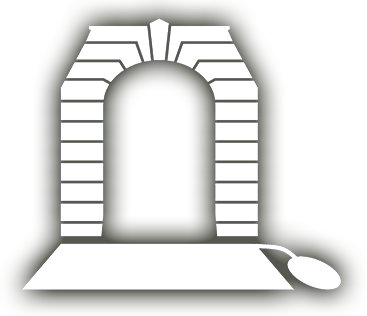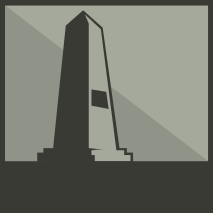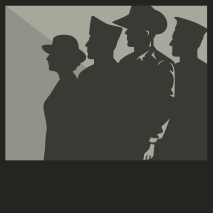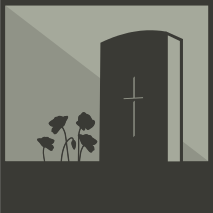
ROBERTSON, Gwendoline Hope
| Service Number: | 503448 |
|---|---|
| Enlisted: | 6 September 1943 |
| Last Rank: | Sister (Nursing Service) |
| Last Unit: | RAAF Hospitals |
| Born: | Broken Hill, New South Wales, Australia, 23 September 1910 |
| Home Town: | Broken Hill, Broken Hill Municipality, New South Wales |
| Schooling: | Central Girls' School Broken Hill, Broken Hill High School |
| Occupation: | Nurse |
| Died: | Illness, Adelaide, South Australia, 7 May 1945, aged 34 years |
| Cemetery: |
Centennial Park Cemetery, South Australia Plot W Row B Grave 10 |
| Memorials: | Adelaide WW2 Wall of Remembrance, Australian Military Nurses Memorial, Australian War Memorial Roll of Honour, Daw Park Repatriation Hospital WW2 Women of the Armed Forces Who Died HR, Kapunda Dutton Park Memorial Gardens Nurses Plaques, St Marys SA Army Nursing Sisters/Women Memorial Wall |
World War 2 Service
| 6 Sep 1943: | Involvement 503448, Australian Army Medical Women's Service | |
|---|---|---|
| 6 Sep 1943: | Enlisted | |
| 6 Sep 1943: | Enlisted Royal Australian Air Force, Flight Lieutenant, 503448 | |
| 7 May 1945: | Involvement Sister (Nursing Service), 503448, RAAF Hospitals | |
| Date unknown: | Involvement |
Help us honour Gwendoline Hope Robertson's service by contributing information, stories, and images so that they can be preserved for future generations.
Add my storyBiography contributed by Faithe Jones
EARLY LIFE
Gwendoline Hope Robertson, known as Gwen, was born on 23 September 1910 in Broken Hill, New South Wales. She was the youngest daughter of Ellen Agnes Dougall and James Duncan Robertson.
Ellen and James were married in Broken Hill in 1905 and resided at 140 Ryan Street in Railway Town, on the southwestern fringe of Broken Hill. In 1908 their first child, Mavis, was born. She was followed two years later by Gwen.
Gwen attended Central Girls’ School in Broken Hill and in 1919 was in class 3B. That was the year of the global pneumonic influenza (‘Spanish flu’) outbreak. In February free movement across the South Australia–New South Wales border at Cockburn was restricted in an attempt to control the spread of the virus – and Gwen, Mavis and their mother became stranded in Adelaide. The border was finally opened again, and they arrived by train at Broken Hill station on 4 March with around 400 others, mainly women and children, but also a number of returned soldiers. Among the passengers were Eva Bullwinkel of Oxide Street and her three-year-old daughter, Vivian Bullwinkel.
In 1924 Gwen began attending Broken Hill High School. She passed her Intermediate Certificate Examination at the end of 1927.
Gwen was musically inclining growing up and was a singing student of Mr. Jack Bargwanna. In July 1928 she took part in the Bargwanna Students’ concert, giving a solo rendition of ‘Valse Caprice’ by Rathbun.
NURSING
After deciding to go into nursing, Gwen was accepted as a probationer at the Broken Hill Hospital. She remained there for 18 months before transferring in 1934 to the Adelaide Hospital. She passed her final Nurses’ Board of South Australia examination in August 1937 and concluded her training on 14 September with general nursing and children’s hospital certificates.
Now a qualified nurse, Gwen was appointed to the staff of the Adelaide Hospital and in 1939 was appointed charge nurse (in that same year the hospital became ‘Royal’). She remained for seven years at the Royal Adelaide after completing her training and during that time worked with many nurses who would go on to serve in the Second World War.
ENLISTMENT
When the Second World War broke out in Europe, thousands of Australian women and men volunteered their services. The numbers applying for the services increased significantly following the German invasion of France and the Low Countries in May–June 1940, as the German presence on the other side of the English Channel directly threatened Britain.
Gwen too wanted to volunteer. Around October 1941 she applied to join the Australian Army Nursing Service but was not called up. She then applied to join the Royal Australian Airforce Nursing Service (RAAFNS). The application process began on 26 October 1942, when she was interviewed by Margaret Lang, the matron-in-chief of the RAAFNS. At the time Gwen was in charge of the Adelaide Ward, the male surgical and casualty ward at the Royal Adelaide. Matron Lang noted Gwen’s experience in surgical nursing and was impressed by her deportment and appearance. She recommended Gwen for consideration the following February.
On 16 February 1943 Gwen submitted her application for appointment to the RAAFNS and on 3 March was released for war service by her matron at the Royal Adelaide, Lucy Daw. She had a medical examination and x-ray on 29 March and then awaited her call up.
After five months Gwen was called up and at the beginning of September travelled from Adelaide to Melbourne. Prior to her departure, her mother came down from Broken Hill to spend a few days with her.
On 2 September Gwen’s application was confirmed and approved, but still the process was not quite over. On 4 September she submitted her application for a commission in the RAAFNS. Finally, on 6 September 1943, Gwen was commissioned at the rank of Sister Group II and posted to No. 2 RAAF Hospital, based at the Melbourne Showgrounds in Ascot Vale. She thus became one of 613 nurses to serve with the RAAFNS over the course of the Second World War.
NO. 2 RAAF HOSPITAL, ASCOT VALE
No. 2 RAAF Hospital had been raised in October 1940 and incorporated the sick quarters of No. 1 Engineering School, which had been based at the Showgrounds since March 1940. By the end of February 1942, the volume of work at the hospital had increased substantially due to the Japanese invasion of Southeast Asia and the southwest Pacific, and the unit’s staff had increased to 20 officers, 26 nurses and 124 other personnel.
Gwen became ill only three weeks into her posting and from 10 October to 5 November was granted sick leave. It seems likely that her illness was related to the myocarditis that would later claim her life.
From 9 to 11 March 1944 Gwen was granted special leave and then took annual leave from 12 to 15 March. During this time, she returned to see her family in Broken Hill.
Two days after flying back to Melbourne from Broken Hill, Gwen was transferred to No. 1 Convalescent Depot (CD), based in Warburton in the Yarra Ranges to the east of Melbourne.
NO. 1 CONVALESCENT DEPOT, WARBURTON
No. 1 CD had been raised in November 1942 at Flemington Racecourse in Melbourne and had moved the following month to nearby Travancore House, a centre for children with intellectual disabilities. In March 1943 the unit moved to Warburton. At its inception, No. 1 CD provided medical services, physical training, physiotherapy and occupational therapy for injured or ill RAAF personnel. Over time, however, the unit had refined its programs and developed a more intensive and targeted approach to patients’ recovery, with greater emphasis on individualised treatment plans and specialised therapies. Three months after Gwen’s arrival, the unit was renamed No. 1 Medical Rehabilitation Unit to reflect this evolving purpose.
In May 1944 Gwen contracted pneumonia, which exacerbated her myocarditis, and on 30 May she returned to No. 2 RAAF Hospital on a non-effective basis.
ILLNESS
Five months later, on 23 October, Gwen’s appointment was terminated due to her illness, but this decision was withdrawn. On 6 November she was admitted to No. 2 RAAF Hospital (her own hospital) seriously ill with cardiac failure. She was removed from the seriously ill list on 29 December but still required active medical treatment. It was then decided to retain Gwen in the RAAFNS until 29 May 1945, or until the completion of her medical treatment and rehabilitation, whichever came sooner.
On 22 February 1945 Gwen returned to Adelaide and was posted to No. 7 RAAF Hospital, based at the Royal Adelaide Hospital. She returned to the seriously ill list on 27 March and on 30 April was transferred to the dangerously ill list.
Gwen died at 5.25 am on 7 May 1945 of complications associated with myocarditis. She was only 34 years old.
FUNERAL
The day after her death, Gwen was buried with full military honours at the Centennial Park War Cemetery in Springbank, on the southern fringes of Adelaide.
After a memorial service was held in the nurses’ chapel at the Royal Adelaide Hospital, Gwen’s coffin was borne shoulder high by six RAAF medical officers to the guncarriage, upon which it was carried the 14 kilometres to the cemetery.
From the gates of the cemetery to the grave extended a guard of honour of RAAF personnel. A Presbyterian minister conducted the ceremony, which was concluded by the sounding of ‘The Last Post.’ Gwen’s mother and sister were both there.
IN MEMORIAM
On 9 September 1949 a memorial plaque dedicated to five RAAFNS nurses who had died during the war was unveiled by Governor-General McKell at the RAAF base in Laverton, Victoria. They were Staff Nurse Joan Connell, Sister Marie Craig, Sister Sheila Long, Sister Verdun Sheah – and Gwen.
In March 1952 Gwen’s mother was informed by the Air Board that Gwen’s name had been inscribed on the honour roll in the nurses’ chapel, Westminster Abbey, London. The chapel was dedicated on 2 November 1950 by Queen Elizabeth as a memorial to all Commonwealth military nurses who died while serving in the Second World War.
Biography contributed by Faithe Jones
Gwendoline Robertson completed nursing training at RAH in 1937 and was appointed Staff Nurse in 1938, then Charge Nurse in 1939.
Gwendoline commenced training at the Broken Hill Hospital and in 1934 came to Adelaide and entered the Royal Adelaide Hospital as a trainee. After graduation, she worked for seven years at Royal Adelaide Hospital.
At the time of her enlistment in the RAAF in 1943, she was sister in charge of Adelaide Ward, Royal Adelaide Hospital. She was stationed at Ascot Vale and Warburton Vic with the RAAF. After a serious illness at Warburton she went back to Ascot Vale, and was transferred back to Adelaide. Her memorial service was held in the nurses' chapel at the Royal Adelaide Hospital and she was buried with full military honours.
In 1950, her name was placed on the roll of honor in Westminster Abbey, dedicated by Queen Elizabeth on 2 November 1950, as a memorial to all nurses of the British Commonwealth who died while serving with the forces in the 1939-45 war.













